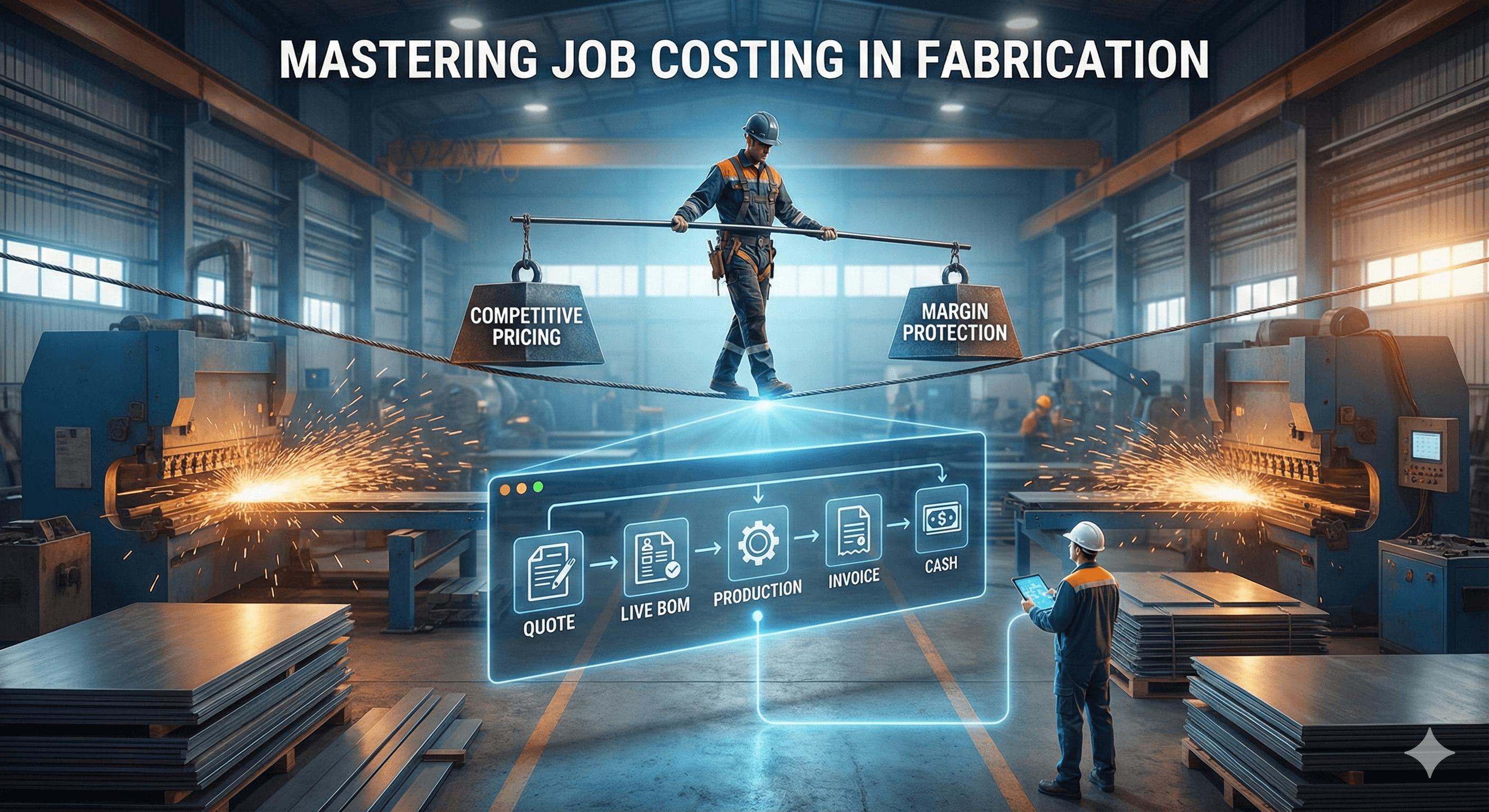Spreadsheets and magnetic boards may have once been effective tools for production scheduling. Today, they’re among the biggest culprits of inefficiency in modern manufacturing scheduling.
The Familiar Trap
Manufacturers often stick with what they know when it comes to production planning. Whiteboards are visual. Spreadsheets are customizable. But neither is dynamic or scalable for effective production scheduling processes.

Disjointed Systems
Manual production scheduling tools don’t communicate with other business functions. If a job is delayed or rescheduled, purchasing, inventory management, and sales are left in the dark. This creates silos and leads to costly miscommunication, hindering the overall manufacturing planning process.
No Real-Time Insight
Traditional production scheduling tools don’t reflect what’s really happening on the floor. You can’t see delays, progress, or equipment status. You plan production in isolation and react only when problems become unavoidable, making it difficult to maintain an accurate production schedule.
Limited Forecasting
Without integrated data, you can’t forecast effectively in your production planning. You can’t see the domino effect of a single delay or proactively rebalance your production schedule. This lack of foresight can lead to production bottlenecks and decreased production efficiency.
Moving Beyond the Whiteboard: Modern Production Scheduling
Modern production scheduling requires systems that are:
- Integrated with Enterprise Resource Planning (ERP)
- Updated in real-time for accurate production monitoring
- Flexible enough to handle change in the production scheduling process
- Visual yet dynamic for effective manufacturing scheduling
MIE Trak Pro offers built-in production schedulers that sync with inventory control, purchasing, capacity planning, and customer demand—all in one ecosystem. This integration allows for more efficient manufacturing operations and improved resource allocation.
The Benefits of Advanced Production Scheduling Software
Implementing manufacturing scheduling software can provide numerous advantages:
- Improved Production Efficiency: Real-time monitoring of your production schedule allows for quick adjustments and optimization of manufacturing processes.
- Better Resource Utilization: Advanced scheduling algorithms help in optimal resource allocation, reducing manufacturing costs and improving capacity utilization rates.
- Enhanced Supply Chain Management: Integration with ERP systems facilitates better coordination between production planning and supply chain operations.
- Increased On-Time Delivery: Accurate production schedules lead to more reliable delivery timelines, improving customer satisfaction.
- Continuous Improvement: Data-driven insights from production scheduling software enable ongoing optimization of manufacturing operations.
Choosing the Right Production Scheduling Software
When selecting production scheduling software, consider the following factors:
- Flexibility: Look for solutions that can handle various manufacturing scheduling methods, from finite capacity scheduling to dynamic scheduling.
- Integration Capabilities: Ensure the software can seamlessly integrate with your existing ERP and Manufacturing Execution Systems (MES).
- Scalability: Choose a solution that can grow with your business, accommodating increases in production capacity and complexity.
- User-Friendly Interface: Opt for software with intuitive production scheduling tools that your team can easily adopt and use effectively.
Conclusion
If you’re still using traditional scheduling tools, you’re planning production in the past. It’s time to upgrade to production scheduling software that empowers visibility, collaboration, and agility in your manufacturing operations. By implementing advanced manufacturing scheduling software, you can optimize your production schedule, improve efficiency, and stay competitive in today’s fast-paced manufacturing environment.
Remember, effective production planning and scheduling is not just about creating a static production plan—it’s about having a dynamic, responsive system that can adapt to the ever-changing demands of modern manufacturing. Embrace the power of advanced production scheduling tools and take your manufacturing planning process to the next level.



